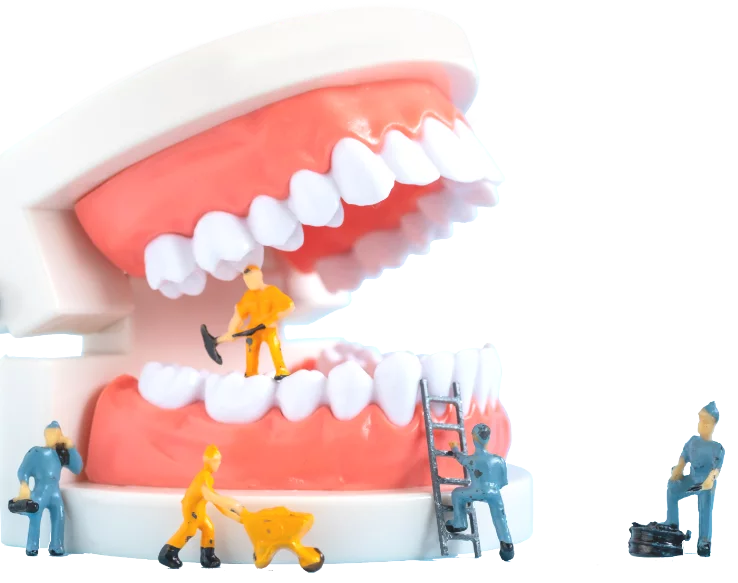Blog Summary Dental materials play a vital role in restoring and protecting teeth affected by decay, disease, or injury. From fillings and crowns to implants and ceramics, understanding each material’s properties, aesthetics, and biocompatibility helps dentists choose the best option to improve oral health, durability, and patient satisfaction.
While dentistry primarily focuses on preventative methods, the need for restorative care remains in high demand. Tooth decay, periodontal disease, and mouth trauma leave the teeth more susceptible to further damage from bacteria if not addressed. Dental clinicians use many dental materials to restore patients' teeth back to health.
Dental materials refers to any created substances or products used in dentistry, such as dental crowns, fillings, dental implants, and the obturation material used to fill a root canal. Understanding the types of materials available and how they are used will improve and benefit your patients' oral health.
Types of Dental Materials
The wide range of dental materials allows dentists to choose the right application for every situation, minimizing invasive procedures when possible. Restorative options treat tooth decay or tooth injury depending on the different levels of severity.
Different Types of Restorative Materials

Dental Fillings
Dental fillings are used when a small cavity is found in a tooth. Dentists remove any necrotic tissue from the hole before filling it with a material that will not allow food or bacteria back into the space. Different types of filling materials are used, such as gold, composite resin, ceramic, and dental amalgam.
Dental Crowns
When a tooth has extensive decay or is cracked or broken, a dental crown is used to restore it. A dental crown is a tooth-shaped cap made of porcelain, various metals, or composite resin. The dentist prepares the tooth by cutting and forming it into a stump so that the crown can be firmly placed over it.
Onlays
When a tooth has damage that falls between the need for a filling and a dental crown, a dental onlay can be the perfect choice. A dentist will prepare the damaged portion of the tooth much like when placing a crown, except the healthy part of the tooth will be left untouched. This makes an onlay a less invasive procedure than getting a crown.
Root Canals
When tooth decay progresses through the tooth's outer layers, it eventually begins to infect the pulp at the tooth's center. A root canal is a procedure where damaged pulp is removed and thoroughly disinfected. The core filling material used by 96% of dentists is called gutta-percha, which is a natural thermoplastic found in specific Malaysian trees.[1]
Dental Implants
When a tooth cannot be saved, a dental implant, which consists of an artificial tooth root and crown, is often recommended to replace the tooth. A dental implant is a restoration made up of several parts. A titanium or zirconia implant fixture is placed in the gums, where the tooth's roots used to be. A titanium abutment and screw connect a tooth-shaped crown to the fixture. Much like a dental crown, the implant crown can be made of metal or, more popularly, ceramic because of its natural, tooth-like appearance.
Properties and Characteristics
After a particular restorative material is selected to address the patient's dental needs, the next step is to choose the substance of the restoration. Discussing what is important to each patient may sway your decision when selecting a particular type of dental material. While safety and durability are crucial for each patient, cost or aesthetics may affect the patient's opinion on which material to use.
Impact of Dental Materials on Aesthetics

Much of modern dentistry has been focused on improving dental aesthetics. Patients increasingly seek more discreet, natural restorations instead of dark, visible metal materials. The major impact of a wider selection of materials and cost options is the choice patients get when deciding what is most important to them.
Selection Criteria for Dental Materials
The type of material you choose should be based on your patient's needs, specific lifestyle choices, and known allergies. Knowing each material's key properties, such as strength, durability, aesthetics, and biocompatibility, will help you make the best decision for your patient.
Metal alloys
Titanium, gold, or platinum are extremely durable metal alloys used in implants and crowns. Typically, the body accepts metal alloys well unless a patient has a particular allergy to one of the metals.
Ceramic
Depending on the type of ceramic used, this non-metal material mimics the look of a real tooth and varies in durability.
- Feldspar porcelain: "Gold standard" of aesthetics, susceptible to damage.
- Zirconia: A new type of ceramic, highly durable.
- Lithium disilicate ceramic: Durable and used to make the core of restorations, but not as attractive as other ceramics.[2]
Amalgam
Dental amalgam has been used for over 150 years and consists of different metals like silver, tin, and copper, as well as elemental mercury. Amalgam is often called silver fillings or mercury fillings, being made up of 50% mercury. While the Food and Drug Administration (FDA) has deemed amalgam fillings safe to use, small amounts of mercury vapor can be released and absorbed by the patient, primarily in the lungs. Being less expensive than other filling materials, dental amalgam is also long-lasting.[3]
Composite Resin
Made of fine glass and plastic particles, composite resin can be used in filling material as a crown or veneer. The color can be matched to a patient's enamel but it isn't as natural-looking as porcelain. Over time, the resin shrinks and wears away from chewing, teeth grinding, and drinking hot or cold drinks.
Biocompatibility Considerations in Dental Material Selection
Biocompatibility refers to the likelihood that the patient's body will accept a foreign material. Unless a patient has a known allergy, some materials have a higher success rate among patients than others.
Considering the biocompatibility of materials is crucial because they are directly used in the mouth. If a patient is not biocompatible with the dental material, tissue irritation, and allergic reactions can occur.
Advantages and Disadvantages of Dental Materials
Catering to a patient's desires impacts how positively they receive treatment. Regardless of how durable a restoration is, if aesthetics is a top priority to a patient, they will not be satisfied with seeing a dark, metal alloy crown in their mouths, for example.
By providing clear information to your patients about the pros and cons of each material used, you will improve their oral health and build a positive reputation for treating patients as a whole.
The following is a list of some pros and cons to note about each material.
Amalgam
Pros include durability and cost-effectiveness
Cons include less aesthetically pleasing and concerns about mercury content
Composite resin
Pros include discreet color and bonding ability
Cons include being less durable than some other materials and being susceptible to staining
Titanium
Pros include a high success rate of biocompatibility and durability
Cons include metallic appearance (if gums recede)
Zirconia
Pros include aesthetically pleasing, durable, and a metal-free option
Cons include higher cost and limited availability
Porcelain
Pros include being aesthetically pleasing and resistant to surface wear
Cons include can easily chip or crack
Cost-Effectiveness of Dental Materials
The initial cost of any dental restoration should be considered, especially if a patient does not have dental insurance. However, the cost-effectiveness also needs to be examined. If using a less expensive material means that the procedure will need to be repeated sooner, the cost difference may not be that large.
Less expensive filling materials like composite resin may not always be the best choice, especially if a patient does not make regular dental appointments. Because the resin is likely to break down over time, tooth decay could worsen before the filling is checked by a dentist.
Dental Materials in Dentistry
Knowing the different dental material options available and considering the benefits and drawbacks of each one help dentists make the right choices for their patients. With so many new and well-proven materials available, you can confidently choose the best one for every situation.
Find a dentist using the latest dental materials with Smile Generation's Find a Dentist tool.
Find your trusted, local dentist today!
Sources
[1] Endodontic Materials Used To Fill Root Canals, NIH, Mar 19, 2023, https://www.ncbi.nlm.nih.gov/books/NBK587367/#:~:text=Although%20other%20materials%20have%20been,Dimensional%20stability
[2] Overview of Several Typical Ceramic Materials for Restorative Dentistry, PubMed, Jul. 18, 2022, https://www.ncbi.nlm.nih.gov/pmc/articles/PMC9314004/
[3] Dental Amalgam Fillings, FDA, May 22, 2024, https://www.fda.gov/medical-devices/dental-devices/dental-amalgam-fillings
Smile Generation blog articles are reviewed by a licensed dental professional before publishing. However, we present this information for educational purposes only with the intent to promote readers’ understanding of oral health and oral healthcare treatment options and technology. We do not intend for our blog content to substitute for professional dental care and clinical advice, diagnosis, or treatment planning provided by a licensed dental professional. Smile Generation always recommends seeking the advice of a dentist, physician, or other licensed healthcare professional for a dental or medical condition or treatment.








